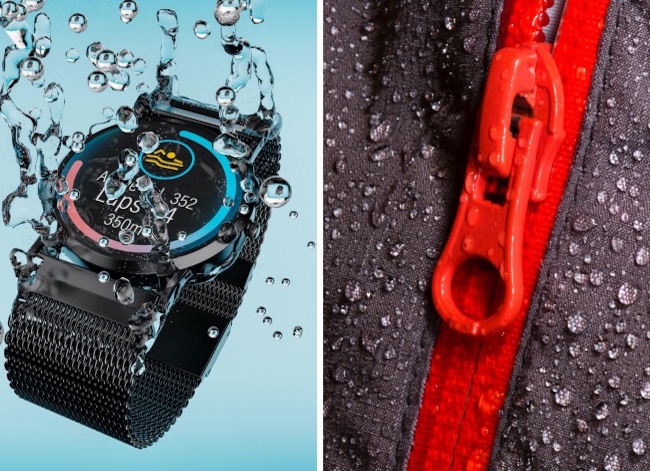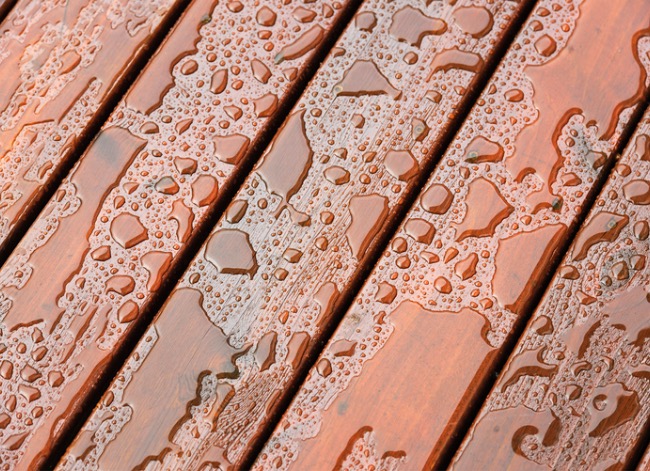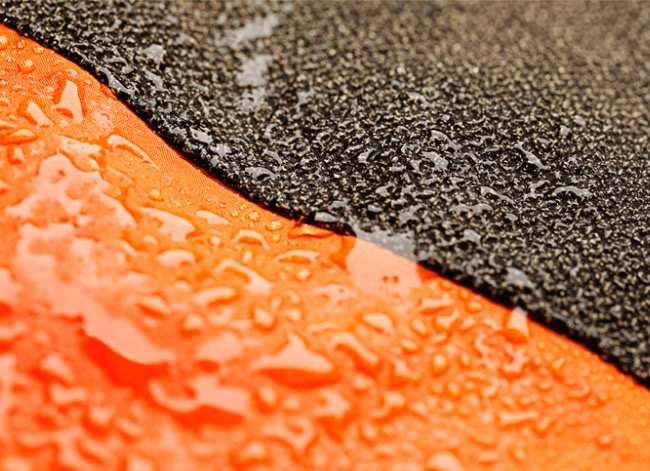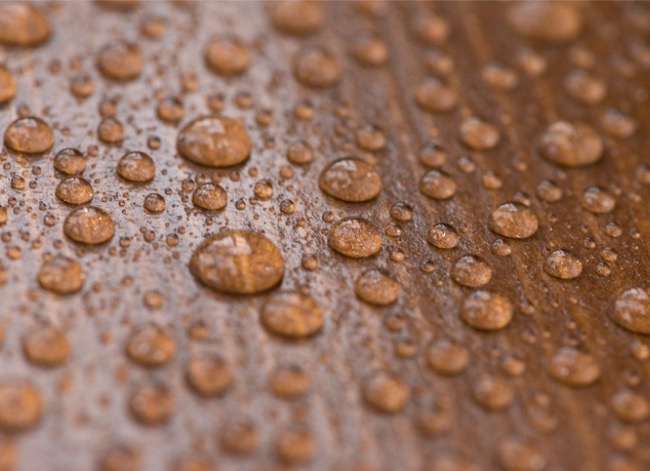

We may earn revenue from the products available on this page and participate in affiliate programs. Learn More ›
If you’re confused about the difference between the terms “water-resistant” and “waterproof,” don’t worry, you’re in good company. The debate surrounding water-resistant vs. waterproof products and materials is long-lived, and few people truly understand the difference.
When it comes to building materials, outerwear, electronics, and even wristwatches, manufacturers and consumers throw the terms around as if they’re interchangeable. But that’s a mistake. In fact, mixing the two terms can be an expensive and unpleasant blunder. This guide will explain the difference so you’ll know which term to look for in clothing, building materials, or electronics.
In general, waterproof connotes that a material is impervious to water.
If you’ve ever been shopping for a particular product and the manufacturer markets it as “waterproof,” that product should be totally sealed or protected from the effects of water. Good old H2O won’t penetrate or affect the product at all.
For instance, a plywood boat would need a waterproof finish to keep it from deteriorating while it’s in constant contact with water. The finish creates a barrier that keeps water from soaking into the wood and weakening it or causing a leak.
Similarly, a basement waterproofing product would seal water out, keeping it from getting into the basement. This could be a rubber membrane on the outside of the foundation, an epoxy coating on the inside, or a number of other types of products. The point is that water cannot seep through the seal.
RELATED: The Best Waterproof Tape to Use Around Your Home

In general, water-resistant connotes that a material repels some water but not all.
Water resistant is very different from waterproof. Items that are water resistant will repel the effects of water to a point. After a period of exposure, or a certain amount of pressure, water will either soak the item or seep through.
A water-resistant jacket is a prime example. This jacket will keep the wearer dry in a light rain or a quick jaunt from the door to the car. It’ll do a much better job than a cotton sweatshirt or a fleece jacket. However, after prolonged exposure, rain will work its way through the seams of this water-resistant jacket, particularly around the hood, neck, and shoulders.
When it comes to building materials, a water-resistant material, such as pressure-treated lumber, will combat the effects of water, but it won’t prevent water from passing through. Once the water soaks the lumber, it will seep through to the other side.

Waterproof fabric offers the greatest amount of protection from rain.
If you’re looking for the ultimate protection from rain, snow, or even just general exposure to water, choose a waterproof fabric. These fabrics are typically covered in a coating that keeps water out entirely. In turn, they can be uncomfortably warm.
Waterproof fabrics typically feature a layer of polyvinyl chloride that prevents water from penetrating the weave of the fabric. Other fabrics might contain a layer of acrylic backing that also keeps water from passing through the weaves, similarly to PVC.
Some fabrics weave in a polyester and polyurethane blend, so they are waterproof but also very lightweight. Also consider Neoprene, the brand name for polychloroprene, which is a rubber substitute used in making wetsuits for watersports.
RELATED: The Ultimate Backyard Camping Guide for Summer
Water-resistant fabric is often more breathable.
Water-resistant fabrics are entirely different from waterproof fabrics. Water-resistant fabrics will shed water and dry quickly, but they’re not entirely waterproof. They also come in many types of material.
Water-resistant fabrics get their moisture resilience in one of two ways: a coating or a tight weave. Materials like canvas and cotton aren’t at all water resistant on their own, but coating them with wax makes them so. The same applies to oilcloth, which was traditionally a cotton duck or linen cloth coated with boiled linseed oil to make it water resistant (modern versions are coated with vinyl, and are more waterproof than simply resistant).
These water-resistant fabrics breathe better than waterproof fabrics because air can pass through their weaves. They won’t breathe as well as a plain cotton shirt, for example, but they’ll breathe much better than neoprene or a PVC-coated material.

Waterproof electronics often come with a depth/water pressure limit.
Manufacturers market a number of electronic products as waterproof. But the reality is that those products are only waterproof to a point, which really makes them water-resistant devices.
Regardless of their marketing, all waterproof speakers, phones, watches, and cameras feature small seams from the assembly process. No matter how tightly the pieces fit or the type of gaskets used, water will penetrate those cracks at a certain depth or level of submersion. When the water pressure exceeds the amount of pressure the seam can hold back, in the water goes.
For this reason, these devices have depth limits or ratings. For instance, a digital watch might have 200 meters of water resistance. This means it can theoretically handle water pressure at depths down to 200 meters before water can force its way in.
Water-resistant building materials can withstand some exposure to moisture but are still susceptible to water damage.
There are plenty of materials at your local home store that are water resistant, and they’re typically used for exterior applications or ground-level installations. These materials include pressure-treated lumber and plywood, certain metals, and masonry materials.
While these products resist water, they’re still susceptible to water damage. Pressure-treated lumber can take on water, and should it freeze inside the wood, it can cause cracking and splitting. Also, continued exposure to moisture can wear the lumber’s water, insect, and weather resistance down.
Likewise, some metals and masonry materials can be considered water resistant because they won’t let water pass through, but the water eventually leads to wear and corrosion.

Waterproof flooring is beneficial for bathrooms and kitchens, where spills and splashes are commonplace.
Waterproof flooring is designed to contain water within a space, and it can be a great benefit to wet spaces like kitchens, bathrooms, and laundry rooms. Occasionally, these flooring options consist of a rubber membrane installed underneath tile, as in a shower space. But many hardwood and vinyl options can keep spilled water on top of their surface.
When water hits these flooring materials, whether it be from a shower, a spill, or a leak, it will puddle on the surface instead of penetrating through the floor and causing damage. The resident can simply mop up the spill. These flooring systems can prevent mold, mildew, and other hazardous conditions and expensive repairs.
